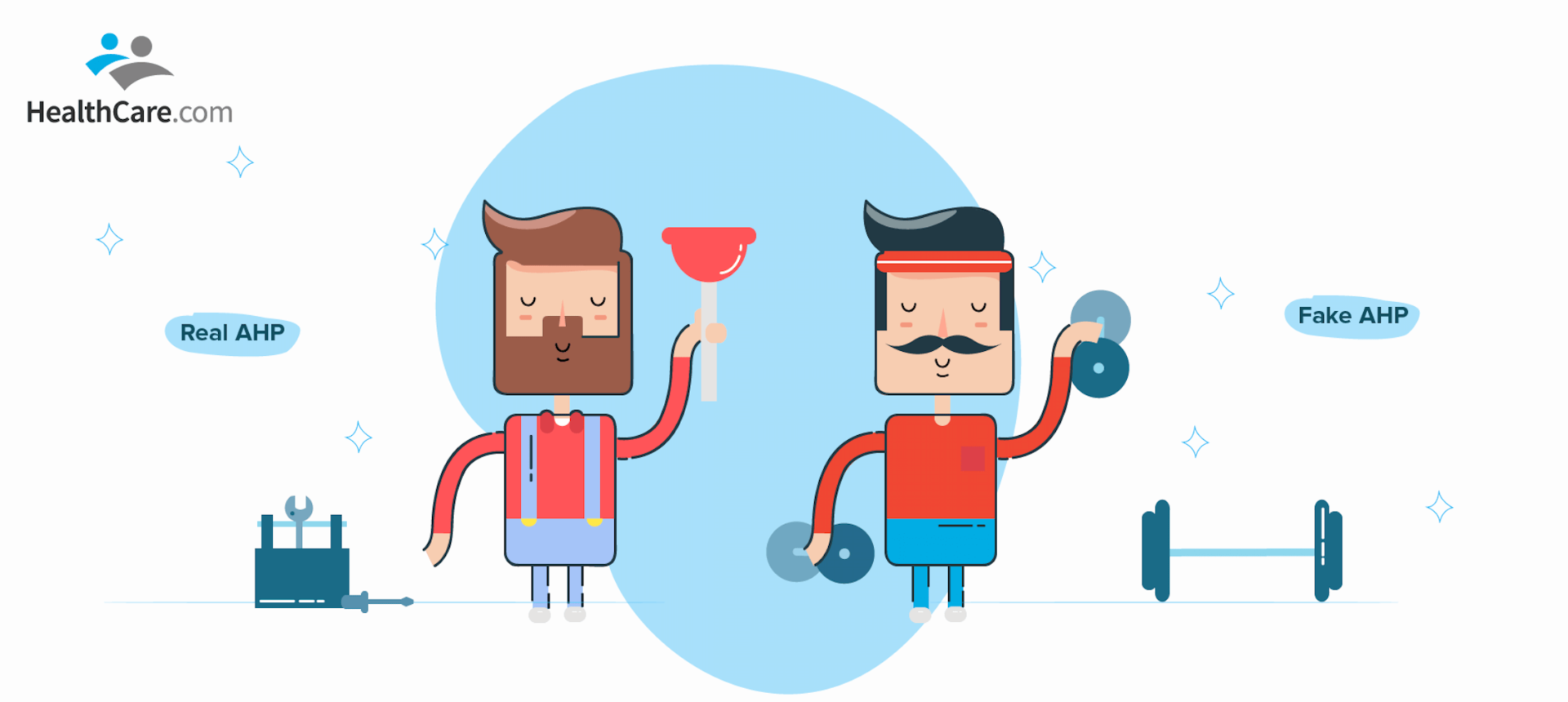Written by Hal Levy
Healthcare Writer
Reviewed by Louise Norris
Expert Reviewer
We want to help you make educated healthcare decisions. While this post may have links to lead generation forms, this won’t influence our writing. We adhere to strict editorial standards to provide the most accurate and unbiased information.
- Until now, only specific groups (“associations”) could create and join association plans – in 2019, almost any group of people can.
- Designed and priced around the needs of a group – like waiters, city-dwellers, or rideshare drivers.
- Plan designs are different than Obamacare – no “metal levels.”
- Another form of mainstream healthcare – AHPs legally count as minimum essential coverage. *
Association health plans (AHPs) are a type of customized health insurance that some employers love. New rule changes mean that AHPs will get another chance at acceptance.
What Are Association Health Plans (AHPs)?
Association health plans are a type of health insurance that’s offered by, and tailored for, people with a “commonality of interest.” Plan members must share the same industry or profession.

AHPs Include Health Insurance Basics
Association health plans work like traditional, major medical health insurance. When you join, you should expect to receive a familiar membership card.
Most association plans partner with a larger health insurer’s network of doctors. You may be familiar with how smaller cell phone companies rent and resell minutes from AT&T. Similarly, your association plan can provide low rates by paying for members’ care in bulk.
AHPs Have Price Flexibility
Association health plans can set different monthly prices (known as premiums) based on risk characteristics like age, gender, and industry factors. Plans formed before new federal rules were created in 2018 can use a small group’s health status to set premiums.
The Affordable Care Act (ACA) prevented most health plans from using health status or preexisting conditions to determine premiums, though risk characteristics like age were allowed. Because of this, insurance companies spread the costs of enrollees’ claims – even the priciest claims – among everyone in the plan.
Association health plans will regain more flexibility to set monthly premiums on an individual basis. As a result, younger Americans, who tend to be healthier, will generally pay less to use an association health plan instead of an Obamacare plan. However, Obamacare plans do include hefty subsidies for those with low incomes.
AHPs will not be allowed to deny membership or charge different prices based on protected characteristics like race or religion. They can’t charge someone more for being sick or exclude coverage for a pre-existing condition.
AHPs Come With New Plan Designs
Association health plans can be designed in a way that appeals to certain groups more than others. Some plans will offer skimpy coverage for prescription drugs, but better coverage for annual checkups.
In this way, AHPs may draw healthy members away from their current coverage. Obamacare plans and employer-based insurance will continue to appeal more to Americans with chronic conditions.
AHPs Are Easier To Join
To prevent people from waiting to buy insurance until they’re sick, Affordable Care Act plans are only open to new members during the 6-week Open Enrollment Period. Once Open Enrollment ends, many people have no choice but to buy temporary health insurance. Some even go without coverage at all.
In contrast, association health plans can choose to be easier to access at all times.
AHPs Follow Older Insurance Rules
AHPs will qualify as minimum essential coverage under the Affordable Care Act, and when smaller groups join together under an AHP with 50-plus employees, it’s subject to large group rules, which are more lenient than small-group rules. Yet unlike most health coverage that you can buy on your own, association health plans are barely regulated by the ACA and the Department of Health and Human Services.
Instead, some rules for association plans are reviewed by the Department of Labor. Since AHPs are funded by employers, they are considered Multiple Employer Welfare Arrangements (MEWAs) under an older federal law known as ERISA. Other AHP rules may fall under state regulation instead of the federal government.
As such, association health plans can offer different (or fewer) benefits than ACA plans. AHPs don’t have to follow as many rules as ACA plans currently do.
AHPs Work Across State Lines
Association plans are regulated in their home state but can market to other states in some instances. So, a state in which other plans must abide by community rating – that is, charging all members the same regardless of age or other characteristics – may not have thought to specify that their rules apply to lower-cost AHPs.
While there are nationwide consumer protection laws that apply to association health plans, many state laws avoid the subject of AHPs. AHPs may not have to meet the stricter financial stability requirements of most other insurance plans, or follow local complaint resolution laws, or follow state guidelines for adequate doctor access.

What Are The Advantages of AHPs??
✅ AHPs Avoid Expensive Obamacare Requirements
Association health plans don’t have to stick to many of the ACA’s rules.
- AHPs can avoid the fees that individual health insurance has to pay, like:
- subsidizing their ACA competitors (“risk adjustment”)
- offering income-based discounts on services (“cost-sharing reductions”, which used to be paid by the federal government, but are now incorporated into premiums)
- AHPs can qualify for large group rules, so they skip small group rules like EHB requirements, single risk pool, risk adjustment, and “metal levels” requirements.
- AHPs don’t have to file as much paperwork as plans that are listed on the federal government’s health insurance website.
- In many states, AHPs have fewer regulatory burdens as well.
✅ AHPs Don’t Pay for Unnecessary Care
Association health plans don’t have to cover Obamacare’s essential health benefits. Most health plans in individual and small group markets have had to cover each of these 10 important types of care – like emergency services and rehabilitation – since 2014.
Opponents of mandatory essential health benefits dislike that the benefits are one-size-fits-all. For instance, EHBs require men to pay for unused maternity care. And essential health benefits are not always covered well – they’re simply covered. Much of the cost-sharing burden can still be on the plan member and not the plan, for services that are incompletely covered with few doctors available.
✅ AHPs Work With HSAs and Existing Health Tools
Other parts of the health system are compatible with association plans.
- If you have a health savings account (HSA), you can use it to pay for AHP medical expenses – but if you want to keep contributing to your HSA, your AHP needs to be an HSA-qualified high-deductible health plan.
- Doctor offices generally don’t care what type of insurance you have.
- And association plans still have to play by fair rules, like no illegal discrimination and no exclusions of pre-existing health conditions.
✅ AHPs Expand Your Range of Healthcare Options
AHPs must have meaningful and “substantive” member representation. Employer members must actively exercise control over the plan’s benefits and governance, even if they don’t run the day-to-day workings of the plan.
It’s important to have more choices in the unfriendly health insurance market. In theory, making AHPs larger can efficiently distribute risk and bring down costs for everyone. Granted, that’s something we’ve heard in each round of American health reform, with little success.
What Are Some AHP Criticisms? ?
❌ AHPs Don’t Focus On Consumer Protection
ACA plans and fully insured AHPs have to spend 80% or more of their monthly premiums on medical care, but self-insured AHPs don’t. There’s also no federal cap on what brokers can be paid for referring people to AHPs. This risks creating plans that offer unusually poor medical benefits, or spend excessively on administrative costs.
The new rules explicitly forbid AHPs from tailoring their own rules to deny coverage to specific, high-need individuals. This prevents plans from skipping over a certain ZIP code or rejecting a certain employer just because it’s the known location of someone with a chronic health condition. However, the burden of proving this rule is generally on the affected person or employer.
❌ AHPs Weaken the Obamacare Market
If more people move to Obamacare alternatives, the Obamacare market becomes less competitive. AHPs will accelerate this trend. Experts believe that the average spending per person who remains on an ACA plan will increase by 1.4 to 4.4% and that their monthly premiums would increase as well.
❌ AHPs Avoid Essential Health Benefits
Because association health plans follow large group rules, they don’t have to cover essential health benefits. Affordable Care Act plans in the individual and small group markets have had to cover each of these 10 important types of care – like emergency services and rehabilitation – since 2014.
Supporters of essential health benefits contend the benefits are necessary so that people don’t encounter unexpected gaps in their health insurance. Advocates say that the existence of these benefits lowers costs for everyone because if people stay healthier, they’re less likely to file pricey claims. The AHP model risks everyone paying more for any of the less common services they’ll eventually need.
History of Association Health Plans
Association health plans have been around for years but fell out of favor in the 1990s. Colorado even banned the creation of new AHPs within its borders, citing scams and false claims coming from the plans themselves.

Association plans that accepted impossibly broad groups of people used to be called “fake AHPs,” because they served “air breathers” or “weight lifters” instead of narrow professional organizations.
The 2014 Affordable Care Act was the final straw for many AHPs. They virtually disappeared from public view once individual health insurance became easier to find on the net.
Bringing association plans back is part of the ongoing political struggle over American health insurance. In October 2017, in the wake of an unsuccessful attempt to repeal Obamacare, the White House announced several proposals for national healthcare policy – including the expansion of AHPs.
Association Health Plan Executive Order
In 2017 the Trump administration sought to make it easier to join AHPs by using an Executive Order.
Among other changes, the Executive Order asked the Department of Labor to expand the legal definition of “employers” and “employees.” Since association health plans are created for employees, this expands the number of people who can join AHPs.
Separately, the same Executive Order also made it easier to get short-term health insurance.
AHPs Are Common
The Kaiser Family Foundation estimates that 6% of small businesses offer association health plans to their employees.

Changes Made In The Final Association Plan Rule
The finalized rule change for association health plans was issued by the Department of Labor in 2018. It was not as far-reaching as most observers expected. The final rule made a few adjustments to current AHP guidelines, including:
- Allows sole proprietors, freelancers and their families (called “working owners”) to join AHPs.
- Expands the criteria for membership, letting people in the same profession or geographic area form and join AHPs.
- Loosens but does not do away with the definition of “associations”. Previously, an AHP’s sponsoring association could not exist primarily to provide health insurance. Now, the associations behind AHPs can exist to provide health insurance as their main goal. Essentially, if the organizations behind AHPs perform sponsor just a bit of community service along with their plan, they won’t be penalized.
- Prevents health underwriting, or using each member’s medical conditions to determine their monthly premiums.
In the end, new AHP rules maintain some restrictions on who can join a plan. The new rules also don’t give AHPs a free pass from state or federal regulation.
In fact, POLITICO reports that the National Federation of Independent Businesses (NFIB) feels that the expansive new AHP policy isn’t what they wanted. NFIB was a leading advocate of AHPs for two decades. But according to the NFIB’s frustrated spokesperson, they “can’t set up an AHP under the new rules any more than [they] could under the old rules.”

Latest News on Association Health Plans
Association health plans are in the news like never before. In June 2018, the Department of Labor under Secretary Alex Acosta published its final rule on AHPs. A handful of existing AHPs began to operate under the new rules as early as August 20, 2018.
However, 11 states, led by New York, successfully sued the federal Department of Labor to prevent the AHP reforms from taking effect.
On March 28, 2019, DC District Court Judge John D. Bates ruled that new AHP rules were “clearly an end-run” around existing health insurance law. Self-insured plans using the new AHP standards would have been allowed to begin on April 1, 2019.
The Department of Labor decided to appeal the ruling. They also have a chance to revise and narrow the new AHP rules instead.
On Jan. 28, 2021 the Department of Justice requested a 60-day abeyance to give the Biden administration time to review the issues in the case and determine how to proceed. A final ruling is still pending.
A study from the Society of Actuaries says that 3 to 10% of people with individual Obamacare plans would have joined an AHP as a result of the Executive Order. Researchers expected that between 13 to 43% of self-employed people would have joined an AHP. Additionally, up to 60% of people on Obamacare’s catastrophic coverage level could have moved to AHPs.
How Can I Enroll in an Association Health Plan?
The changes that will make association health plans easier to join should soon be finalized. For now, your employer will probably let you know if they offer an AHP. AHPs aren’t available to self-employed people or to small groups that don’t have a common industry or interest.
If you’re looking forward to joining an association health plan, it may be easy to get one in the future. In the meantime, you’ll want to compare Affordable Care Act coverage or temporary health insurance options from a trustworthy national site like HealthCare.com.
Editor’s Note: This article was updated on July 19, 2018 to reflect the Department of Labor’s final rules on AHPs, instead of the draft rules; and in April 2019 to reflect a federal court preventing some AHP rules from taking effect. It was updated again on June 2, 2021 t reflect the hold request from the Biden administration.
*Though AHPs count as “minimum essential coverage” for federal purposes, a few states are considering laws that decertify most or all AHPs as minimum essential coverage within their borders. As of writing, only New Jersey has passed this law. ↩
Thank you for your feedback!
Corlette, Sabrina, Jose Hammerquist, and Pete Nakahata. “New Rules to Expand Association Health Plans.” The Actuary, May 2018 (accessed January 2020).
U.S. President, Executive Order. “Presidential Executive Order Promoting Healthcare Choice and Competition Across the United States, Executive order 13813 of October 12, 2017.” Federal Register 82, no. 199: 48385 (October 17, 2017).
U.S. Department of Labor, Employee Benefits Security Administration. “Definition of ‘‘Employer’’ Under Section 3(5) of ERISA—Association Health Plans.” Federal Register 83, No. 4 Friday (January 5, 2018).
Kaiser Family Foundation. “2017 Employer Health Benefits Survey.” kff.org (accessed January 2020).
U.S. Department of Labor, Employee Benefits Security Administration. “Definition of ‘‘Employer’’ Under Section 3(5) of ERISA—Association Health Plans.” Federal Register 83, No. 120 (June 21, 2018).
Cancryn, Adam. “Trump promised them better, cheaper health care. It’s not happening.” Politico, July 19, 2018 (accessed January 2020).
U.S. Department of Labor. “President Donald J. Trump Helps Millions of Americans Employed by Small Businesses Gain Access to Quality, Affordable Health Coverage.” dol.gov (accessed January 2020).
U.S. Department of Labor. “U.S. Department of Labor Statement Relating to the U.S. District Court Ruling in State of New York v. United State Department of Labor.” dol.gov (accessed January 2020).
Corlette, Sabrina, Jose Hammerquist, and Pete Nakahata. “New Rules to Expand Association Health Plans.” The Actuary, May 2018 (accessed January 2020).
Land O’Lakes. “Land O’Lakes, Inc. announces expansion of its Cooperative Farmer Member Health Plan into Kansas.” landolakesinc.com, July 8, 2019 (accessed January 2020).


 by
Louise Norris |
Updated on
August 18, 2025
by
Louise Norris |
Updated on
August 18, 2025 




